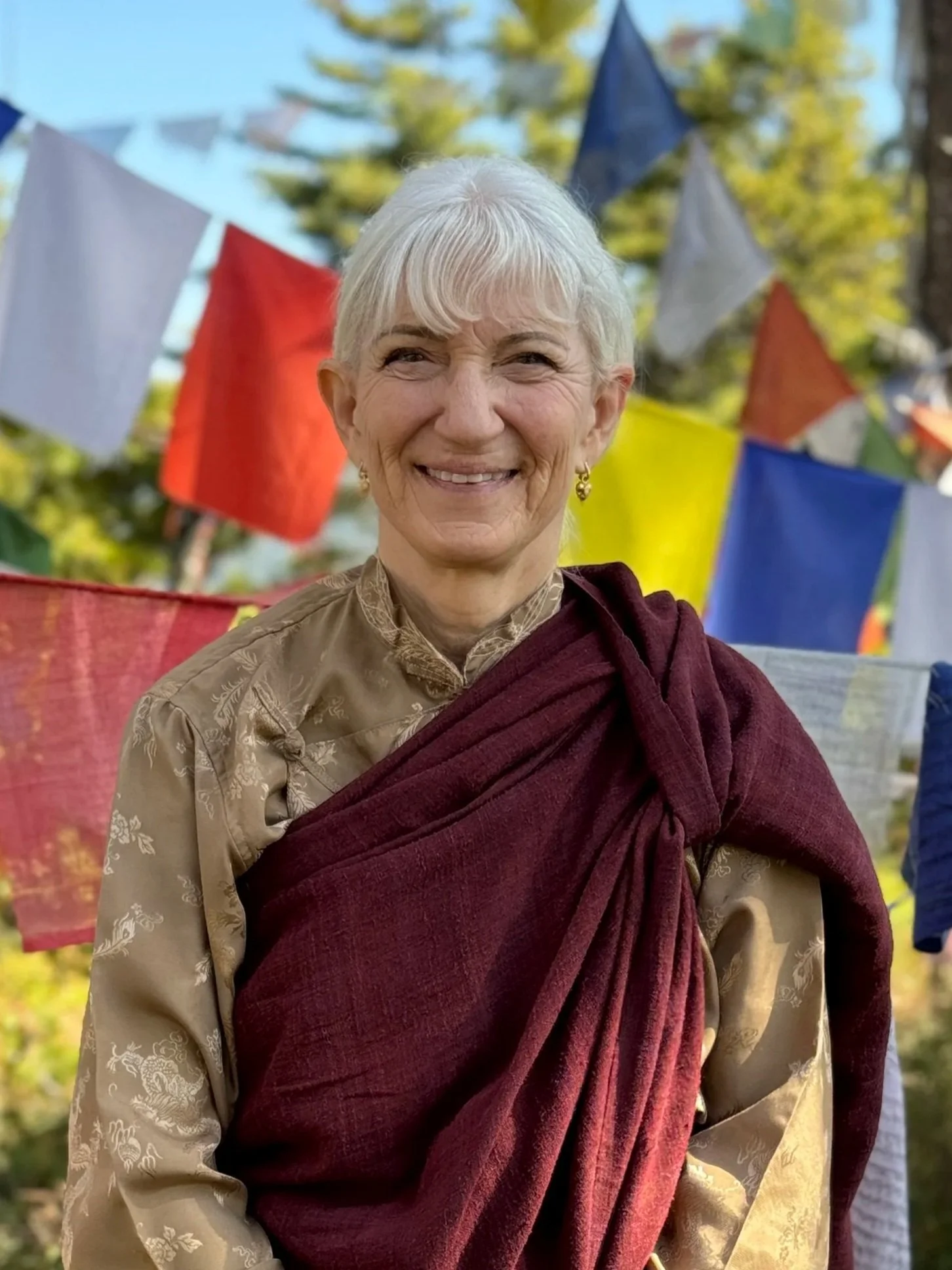
WOMEN’S GROUP
FALL/WINTER 2025
Topic: Teachings on Death & Dying continued
Dates: Saturdays | October 4, November 8, December 6,
January 3, February 7, March 14
Time: 9 AM - 12 PM (Pacific)
Location: Virtual / Zoom
In this series on Death and Dying we will cover facing and preparing for one’s own death, being with others as they are dying, and what meditation practices are particularly helpful for these processes.
We request you be fully present with video on for classes and trainings. This is an opportunity for the lamas and teachers to connect with you. If this is not possible, please let the registrar or teacher know.
There are limited openings in the group. If you are new to Sukhasiddhi, you may be contacted for an interview to join the group.
Fee: $300
Applications close Saturday, September 27 at 6PM Pacific.MEET THE TEACHER
Lama Palden Drolma is the founder and Senior Lama of Sukhasiddhi Foundation, a Tibetan Buddhist center in the Shangpa and Kagyu lineages. Lama Palden transmits, trains, and mentors students and clients, passing on the teachings and practices that enable one to reach complete awakening. She has a lifelong interest in Comparative Mysticism and Inter-spirituality. Lama Palden also worked for years as a licensed psychotherapist, and in addition to teaching, now does Spiritual Counseling at the intersection of the spirituality and psychology. Her book, Love on Every Breath, is on the practice of Extraordinary Tonglen.
The Karma Kagyu Lineage Masters
-

TILOPA (988-1069)
The human founder of the Kagyu school is Tilopa. He meditated unceasingly in the deep jungles of India and is one of the most celebrated of the Indian mahasiddhas. Through tantric mastery, he met the Buddha in his primordial form as Vajradhara (Dorje Chang) and is known to be the first human to receive the Mahamudra teachings. As a teacher, he taught through inspired poetry as he sung about his experiences of realization. His primary disciple was Naropa.
-

NAROPA (1016-1100)
Naropa was a great scholar at the Buddhist University at Nalanda but, after being visited by a dakini who told him that he “understood the words, but not the meaning” of the Dharma, he abandoned his studies and position to search for the teacher Tilopa. While studying with great trust and devotion to Tilopa, he overcame a series of hardships which cleared obstacles on his path allowing him to attain enlightenment. Naropa is one of the renowned 84 Indian mahasiddhas and is best known for his own unique expression of wisdom, the consolidation of the completion stage teachings into what are known as the Six Yogas of Naropa.
-

MARPA (1012 - 1096)
Marpa was born in southern Tibet, traveled to India to receive teachings from the great Indian masters. Naropa became his primary teacher and gave Marpa the full transmission of the lineage, declaring Marpa to be his successor. Marpa brought the Kagyu Lineage teachings back to Tibet and spent many years translating these Buddhist scriptures. This was a major a contribution to the transmission of the complete buddhadharma to Tibet. Thus, he is often known as Marpa, the translator.
-

MILAREPA (1052 - 1135)
Milarepa was born in western Tibet to a prosperous family in the late 11th century. He is best known for sharing his teachings through his acclaimed spiritual poetry known as The Hundred Thousand Songs of Milarepa. The spiritual groundwork he laid for those who came after him illustrates some of the fundamental aspects of the Vajrayana and Mahayana traditions. The spiritual groundwork he laid for those who came after him illustrates some of the fundamental aspects of the Vajrayana and Mahayana traditions.
-

GAMPOPA 1084 - 1161
Gampopa lived in Tibet from 1084-1161. From a young age, he studied medicine and, at age 25, he set forth on the monastic path after his wife and children died in an epidemic. While ordained in the Kadam tradition he heard some beggars speak of the renowned master Milarepa, and profound devotion arose in his heart. He sought out Milarepa and became one of his primary students. After many years in meditation retreat, he brought together the tantric teachings and practices of Indian Mahasiddhas with the those of the Kadam monastic tradition. He also brought together the Kadam Lamrim teachings (Stages of the Path to Enlightenment) and the Mahamudra teachings that he received from Milarepa. He founded the Kagyu tradition and wrote the Kagyu version of the Lamrim, Jewel Ornament of Liberation.


